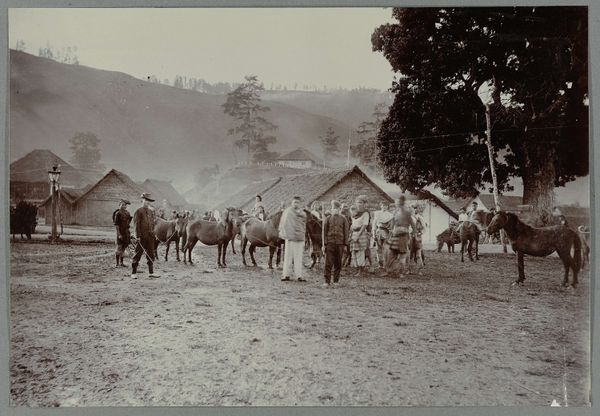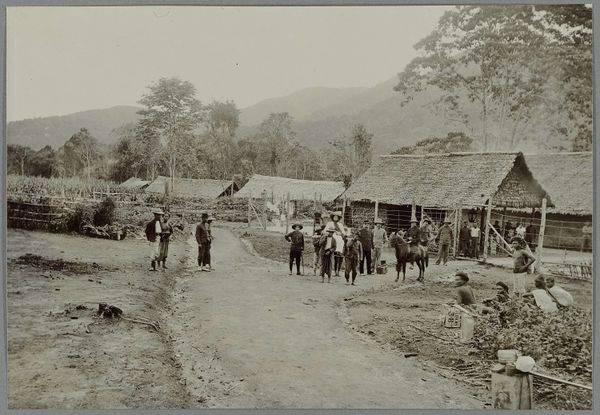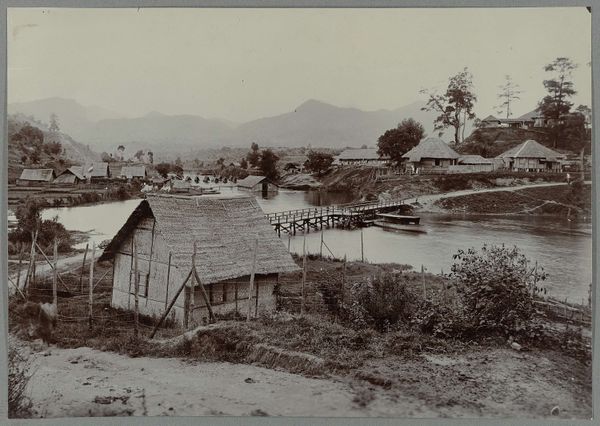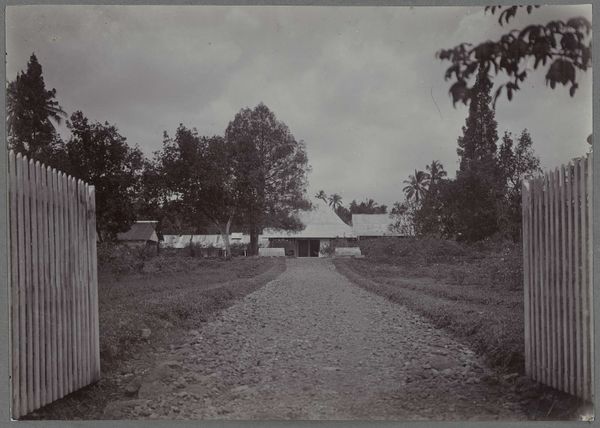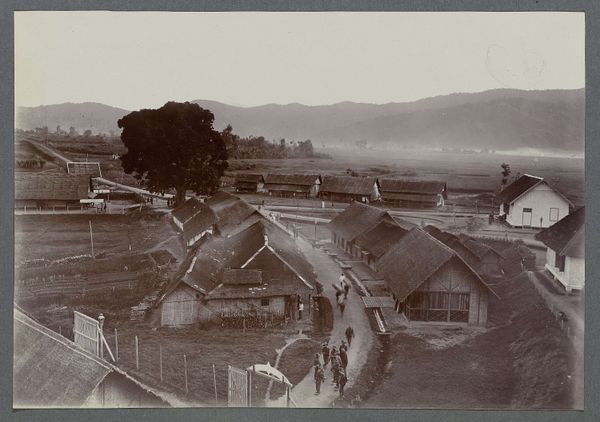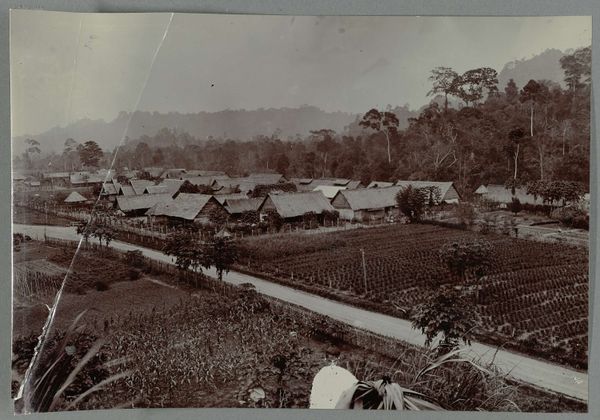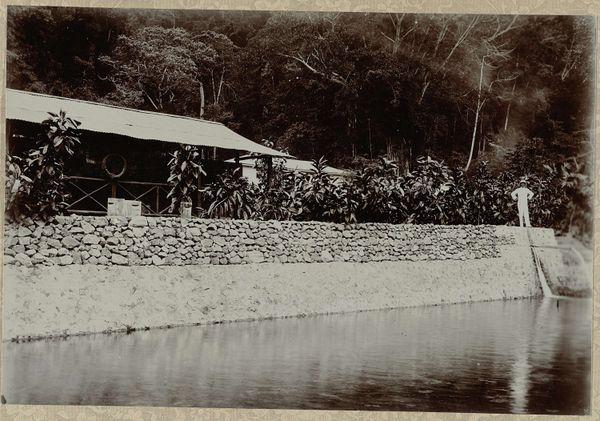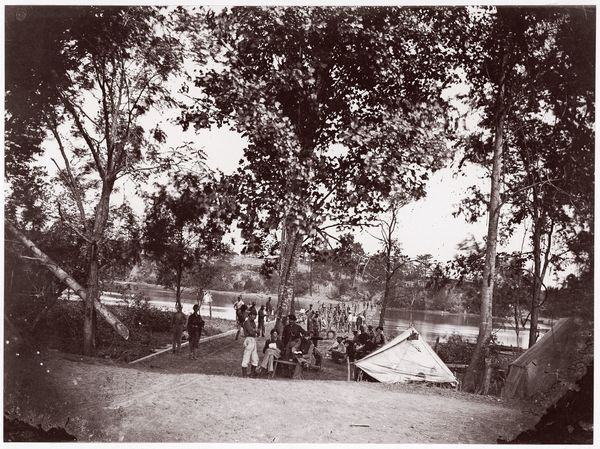
photography
#
portrait
#
pictorialism
#
landscape
#
photography
Dimensions: height 138 mm, width 200 mm
Copyright: Rijks Museum: Open Domain
Curator: This captivating photograph, entitled "Nederlanders aan het meer te Takinguen," dating from somewhere between 1903 and 1913, offers a window into a specific historical moment. Editor: My immediate reaction is a sense of quiet tension. The composition seems almost staged, with the imposing tree and the distant figures creating a visual hierarchy that hints at underlying power dynamics. Curator: The "Dutchmen by Lake Takinguen", as the title translates, places Dutch colonizers against an Indonesian backdrop, visually asserting their presence and influence. That enormous tree to the left really dominates. Its form recalls the Tree of Knowledge, perhaps referencing not just the natural environment but also the assumed wisdom and superiority of the colonial project. Editor: That reading makes sense. Note how they’re positioned; a group beneath its sheltering branches almost passively observing the 'civilized' Dutchmen with their stiff poses and self-important gaze. It underscores the subtle violence of such posed encounters. Curator: Precisely. Landscape photographs of the period, ostensibly documents of geographical places, became instruments of projecting a particular narrative. This one almost echoes a biblical tableau of observers onlooking as an event unfolds. Editor: And that 'event', it feels, is less about benevolent presence and more about exerting dominance, doesn't it? I am drawn to that boy in traditional garb. It’s an extremely compelling study of this figure relegated to the margins in the context of colonialism. The picture isn't just documenting space but delineating social positions within that space. Curator: Exactly. Photography at the time also played a role in racial science as colonizers were attempting to create an objective understanding of what it meant to see and represent indigenous populations. How the act of observation reinforces particular ideas about "otherness" is central here. Editor: Absolutely. This picture isn’t merely recording what’s there; it’s performing colonialism through the very act of framing, arranging, and capturing. Thank you, the cultural weight these symbols continue to carry makes for challenging but crucial reflections. Curator: Yes, its historical implications prompt deeper analysis about the layers of identity and the problematic, yet pervasive power of the photographic image.
Comments
No comments
Be the first to comment and join the conversation on the ultimate creative platform.
